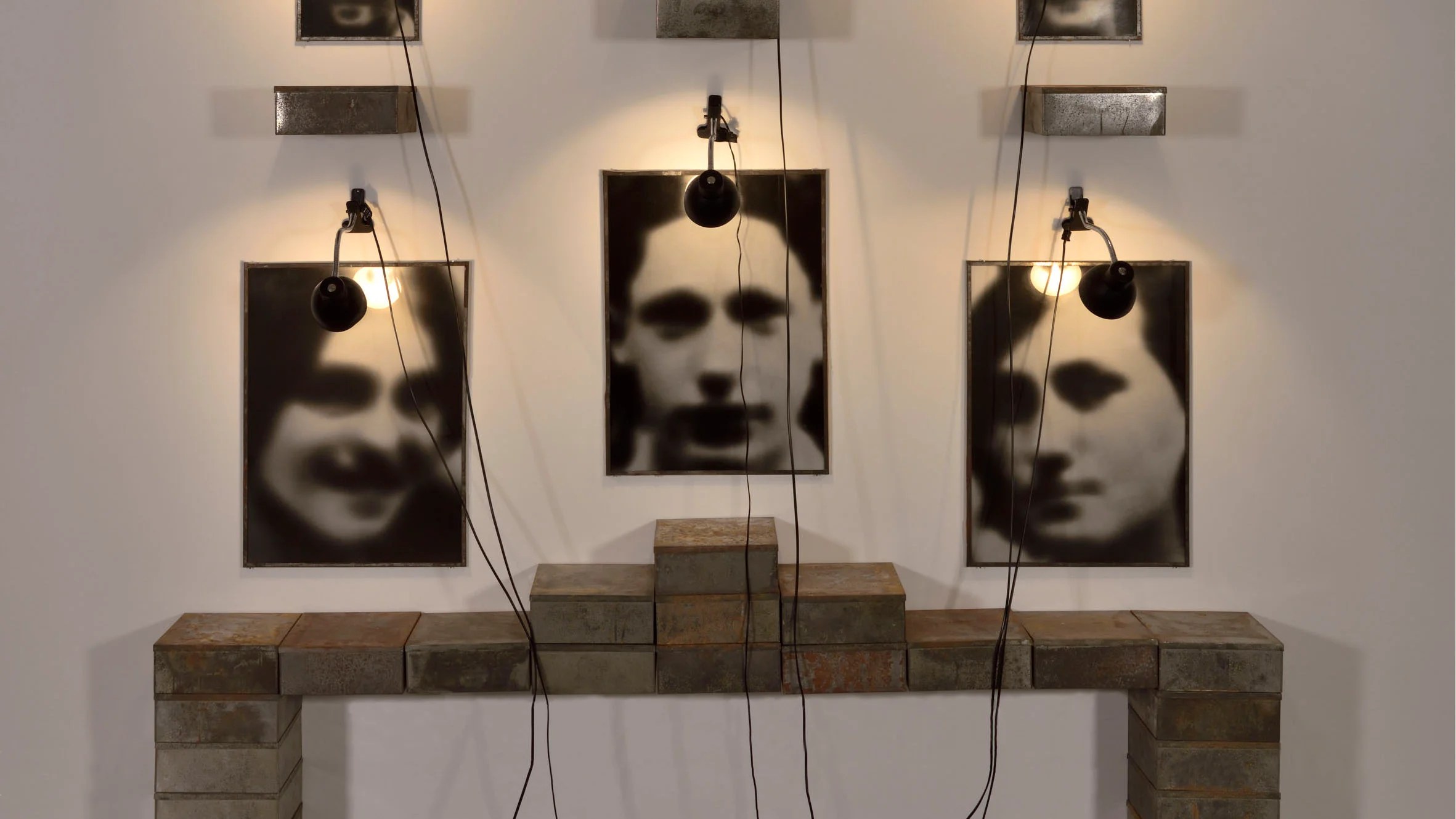Christian Boltanski
The artist’s examination of the emotions evoked by the Holocaust and the atrocities of war remains profoundly relevant in today’s world.
by Rochelle Steiner
 Autel Chases, 1987, Six Framed Black And White Photographs, 28 Tin Boxes, 6 Tin Lamps, Electric Wire
Autel Chases, 1987, Six Framed Black And White Photographs, 28 Tin Boxes, 6 Tin Lamps, Electric Wire
Photo: Rebecca Fanuelle Courtesy Fonds De Dotation Christian Boltanski And Marian Goodman Gallery
For over five decades until his passing in July 2021, Christian Boltanski, the artist, delved into profound and challenging themes, both personal and collective. His creative output was consistently driven by themes such as life, death, memory, fate, loss, the Holocaust, and the horrors of war. The haunting imagery in his works draws striking parallels to the present-day circumstances of war, genocide, migration, deportation, asylum-seeking, and widespread suffering around the globe.
Christian Libert. Boltanski, born in Paris in September 1944, just after the city’s liberation from Nazi occupation, carried his middle name as a reminder of the historical context of his birth. His personal narrative lies at the core of his artistic endeavors. According to family accounts, his parents-to-be fabricated a scenario during the French occupation, leading to the belief that his father had abandoned them. While his Roman Catholic mother perpetuated this tale, his Jewish father remained hidden beneath the floorboards of their home. It was during one of his father’s rare ventures out of hiding that Christian was conceived. The retelling of these stories, alongside a childhood overshadowed by the aftermath of the Holocaust and World War II, profoundly influenced Boltanski’s artistic journey.
Initially working in painting and later transitioning to the use of photographs and objects to craft impactful sculptural installations, Boltanski developed his signature style characterized by its haunting nature. His creations incorporate images sourced from various outlets like newspaper obituaries, family albums, postcards, and police records. These images, often manipulated through cropping and other techniques, lack specific identifying features, portraying a sense of anonymity. Through his artful storytelling, Boltanski communicates enigmatic histories that blur the lines between reality and fiction.
 Entre-temps (2003) (detail) Installation, Dvd + Polyurethane
Entre-temps (2003) (detail) Installation, Dvd + Polyurethane
Courtesy Studio Christian Boltanski And Marian Goodman Gallery
Furthermore, Boltanski frequently integrated personal mementos, clothing, and other items into his sculptural installations, serving as memorials to lives lost. One of his monumental installations, “Personnes,” showcased at the Grand Palais in Paris in 2010 (later recreated at the Park Avenue Armory in New York as “No Man’s Land”), featured over 50 tons of used clothing arranged in rectangular plots across the space. A towering mound of garments, with a mechanical arm suspending over it, symbolized the profound loss and was accompanied by the sound of human heartbeats—a project initiated by the artist to record heartbeats globally. The installations, characterized by dimly lit spaces and suggestive light fixtures, evoke themes of surveillance, remembrance, and religious symbolism.
Boltanski’s work resonates with the processes of remembering, grieving, and marking time, reflecting on the profound impact of loss and memory. His installations, immersive and emotional, continue to evoke a sense of haunting beauty and reflection on the human experience.
 Coeur (2005) Installation; Light Bulb, Sound, Electric Cable Edition Of 2. Installation View At The National Museum Of Art, Osaka, Japan Courtesy Fonds De Dotation Christian Boltanski, The National Museum Of Art Osaka And Marian Goodman Gallery
Coeur (2005) Installation; Light Bulb, Sound, Electric Cable Edition Of 2. Installation View At The National Museum Of Art, Osaka, Japan Courtesy Fonds De Dotation Christian Boltanski, The National Museum Of Art Osaka And Marian Goodman Gallery

 Départ -Arrivée, 2015 86 Red Light Bulbs, 99 Blue Light Bulbs, Electric Wire. Photo: Rebecca Fanuele Courtesy Studio Christian Boltanski And Marian Goodman Gallery
Départ -Arrivée, 2015 86 Red Light Bulbs, 99 Blue Light Bulbs, Electric Wire. Photo: Rebecca Fanuele Courtesy Studio Christian Boltanski And Marian Goodman Gallery
 Personnes (2010) Monumenta (2010) Grand Palais, Paris
Personnes (2010) Monumenta (2010) Grand Palais, Paris
Photo: Didier Plowy, Courtesy Of The Fonds De Dotation Christian Boltanski And Marian Goodman Gallery
